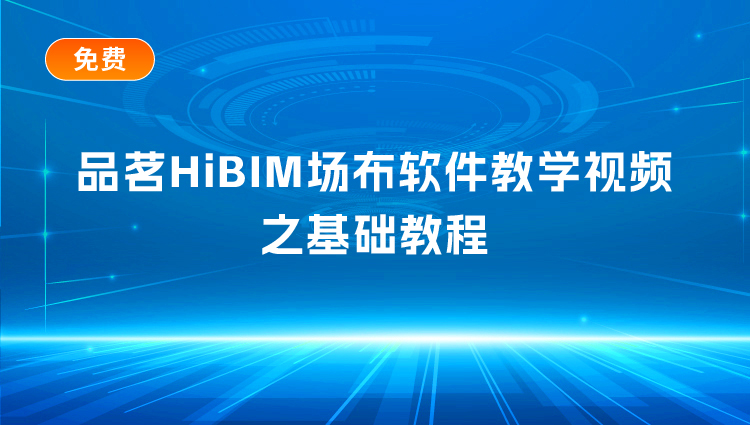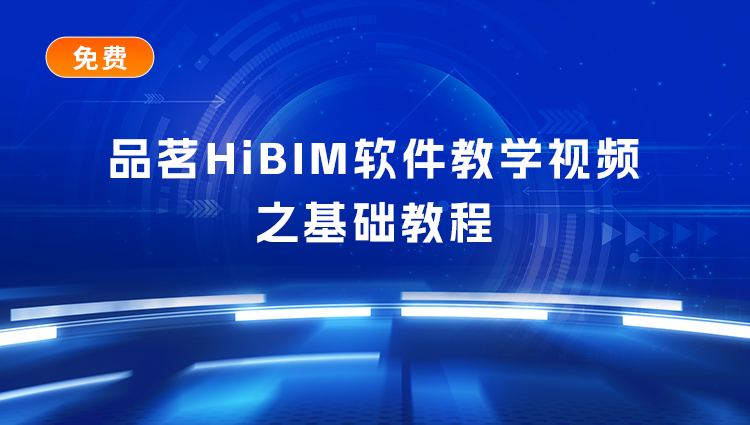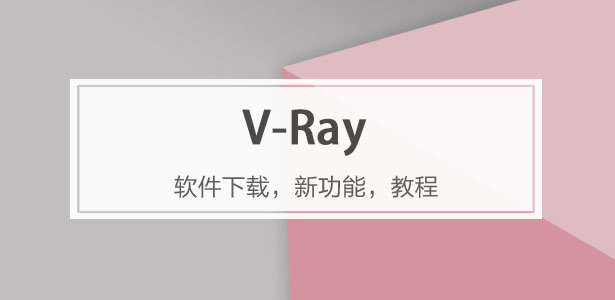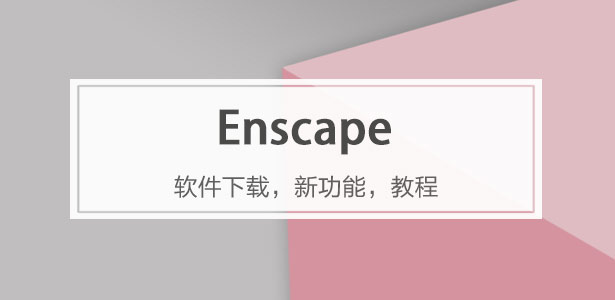
下載app免費(fèi)領(lǐng)取會(huì)員



項(xiàng)目名稱? 成都交子人行橋
橋梁及景觀方案設(shè)計(jì)? 中國(guó)建筑西南設(shè)計(jì)研究院有限公司
項(xiàng)目地點(diǎn)? 四川成都
建成時(shí)間? 2024年5月
用地面積? 12000平方米
本文文字由中建西南院提供。
你站在橋上看風(fēng)景,看風(fēng)景的人在樓上看你。
——卞之琳《斷章》
橋的意義
Significance of bridges
在數(shù)千年的橋梁史上,橋是交通設(shè)施、也是生活的載體;例如著名的佛羅倫薩廊橋。川西傳統(tǒng)城鎮(zhèn)也有不少有名的風(fēng)雨廊橋,如都江堰南橋,屋檐遮風(fēng)避雨,橋上熙熙攘攘——擺攤、喝茶、觀景,這里成為最具活力的公共空間和地方風(fēng)景。
Throughout history spanning thousands of years, bridges have served as not only transportation facilities but also carriers of life, for example, the famous Ponte Vecchio in Florence, Italy. There are many well-known covered bridges in traditional towns of western Sichuan. The Nanqiao Bridge in Dujiangyan, with its eave design, serves as a shelter protecting people from wind and rain. It is also the most vibrant public space and attraction in the locality, where people trade goods, enjoy tea, and appreciate the scenery.
橋梁也是人們情感寄托的對(duì)象,詩(shī)歌與電影以橋?yàn)橹黝}的,不勝枚舉。作為一種古老的特殊類型,橋在今天城市生活中的地位卻已然退化,成為缺乏吸引力的基礎(chǔ)設(shè)施。盡管橋梁的外觀開(kāi)始受到普遍關(guān)注,但多停留在工程學(xué)與造型結(jié)合的維度,仍然過(guò)于單一。
Bridges are also places where people repose their emotions. Numerous poems and films have been created with bridges as their central theme. As an ancient and special architectural form, bridges have degenerated into unattractive infrastructure in today's urban life. Although the appearance of bridges has begun to receive widespread attention, the focus remains merely on engineering and shape designs.
橋的失語(yǔ),也帶來(lái)河流意義的消退,海德格爾說(shuō)過(guò):“只有當(dāng)橋架于河水之上,河岸的意義才得以顯現(xiàn)”,今日的河流被水泥堤岸所包夾,成為途經(jīng)城市的過(guò)客,不復(fù)生機(jī)。所以再現(xiàn)“橋”的意義,也是重新恢復(fù)河流魅力的契機(jī)。
The decline in the status of bridges has diminished the significance of rivers. Heidegger once said, "The banks emerge as banks only as the bridge crosses the stream". Today, rivers are sandwiched by concrete embankments and become passers-by passing through cities, losing their vitality. Therefore, restoring the significance of "bridges" also presents an opportunity to bring back the charm of rivers.
▲ 項(xiàng)目視頻? 拍攝:Holi河貍-景觀攝影
漂浮公園
A floating park
這座位于成都交子金融區(qū)的步行橋,會(huì)以怎樣的方式來(lái)跨越錦江?它到底是一座橋,還是一座公園?
How should this pedestrian bridge in Chengdu Jiaozi Park Financial and Business District cross the Jinjiang River? Should it be positioned as a bridge or a park?
設(shè)計(jì)的起點(diǎn)就是不斷地提出問(wèn)題。首先我們回到城市結(jié)構(gòu)的觀察:錦江自北向南穿流而過(guò),將交子金融商務(wù)區(qū)分為河?xùn)|與河西兩個(gè)長(zhǎng)條形街區(qū)。東西方向延綿2.5公里長(zhǎng)的交子綠帶,被錦江分為兩段,成為隔岸相望的公園。錦江與中軸綠帶的十字形交匯處,便是城市空間的天然斷點(diǎn),需要建立一個(gè)強(qiáng)有力的連接。建設(shè)一座人行橋,不僅可以連接兩岸街區(qū),實(shí)現(xiàn)城市步行系統(tǒng)的貫通,也能將交子綠帶連為一體,實(shí)現(xiàn)與河流的“藍(lán)綠交匯”。
In the process of design, such questions were continuously put forward. Based on the city's urban structure, the Jinjiang River runs from north to south, dividing the financial and business district into two elongated blocks, one on the eastern side and one on the western side. The 2.5-kilometer east-west green belt is split into two parts by the Jinjiang River, becoming two parks facing each other across the river. The intersection of the Jinjiang River and the green belt on the central axis is a natural breakpoint in the urban space and needs to be bridged. Building a pedestrian bridge can not only connect the blocks on both banks, enabling a smooth walkway system but also link the two parts of the green belt, thereby achieving the integration of the river and green belt.



交子綠帶寬度約150米,作為綠帶跨河的部分,橋面不能太窄,否則難以形成連續(xù)的綠軸。但若采用寬幅式斷面,將不可避免地遮蓋河道,投下大片消極的陰影。于是我們?cè)O(shè)想了一個(gè)“多孔”的橋,讓陽(yáng)光得以穿透橋面的孔隙照亮水面。
The green belt is about 150 meters wide. As a part of the green belt crossing the river, the bridge deck should not be too narrow, otherwise it will be difficult to form a continuous green axis. However, if a wide deck is adopted, it will inevitably cover the river channel, leading to a large shaded area. Thus, a "multihole" bridge was designed, allowing sunlight to go through the openings in the deck and illuminate the water below.
通過(guò)單元加法和開(kāi)洞減法的混合,設(shè)計(jì)最終獲得了“蓮橋”的集合形態(tài),多個(gè)“蓮葉”懸挑單元實(shí)現(xiàn)了足夠的覆蓋寬度,圓盤之間又能夠留出空隙,讓陽(yáng)光、風(fēng)雨和視線穿行,人工橋梁與自然河流得以同頻呼吸。9個(gè)大小圓盤單元同形異構(gòu),面積從300到1600平方米,其上種植喬木,與河岸綠地連接成片,成為一處漂浮的公園,懸于錦江之上,行走其間,“步步生蓮”。橋體曲線靈動(dòng),虛實(shí)相間,橋面與倒影相映成趣,每一段懸挑的弧線陽(yáng)臺(tái)都成為人與河流對(duì)話的界面。
The combination of additional elements and the reduction of openings finally resulted in a bridge featuring several "lotus leaves". The lotus leaf-inspired cantilevered elements provide ample coverage width, while the gaps between the discs allow sunlight, wind, rain, and views to pass through. The artificial bridge and the natural river coexist harmoniously, breathing at the same rhythm. The nine discs of varying sizes are isomorphic and heterogeneous, with areas ranging from 300 to 1,600 square meters. Planted with arbors on the deck and connected with the riverbank green belts, the bridge transforms into a floating park on the Jinjiang River. Walking in it feels like stepping from one "lotus leaf" to the next. The bridge features flexible curves and a blend of the virtual and the real. The deck and the inverted reflection in water form a delightful contrast. Each cantilevered arc balcony serves as a platform for people to communicate with the river.




多元場(chǎng)景
Diverse scenarios
這是一處橋與公園的混合體,全長(zhǎng)498米,包括橫跨河西、河?xùn)|兩條市政道路的引橋,以及跨越120米寬河面的主橋,還有與之垂直交疊的原有南北向的濱水綠道。為實(shí)現(xiàn)人行銜接與無(wú)障礙通行,步道系統(tǒng)分成三個(gè)標(biāo)高系統(tǒng):包括跨越河道與市政道路的上層、市政道路的中層,以及河堤綠道的下層。各層間通過(guò)坡道、樓梯與電梯連接。立體交通和分層綠化讓人聯(lián)想起曾經(jīng)的巴比倫空中花園,作為對(duì)古代建造先驅(qū)的致敬,交子人行橋再現(xiàn)了“人在空中游”的景觀夢(mèng)想。
The structure is a combination of bridges and a park, with a total length of 498 meters. It encompasses the approach bridges crossing the municipal roads on both banks, the main bridge over the 120-meter wide river, and the original north-south waterfront greenway that vertically overlaps with it. To ensure seamless connectivity and unobstructed passage for pedestrians, the footpath system is organized into three elevation levels: the upper level, which crosses the river and municipal roads; the middle level, which is aligned with municipal roads; and the lower level, which connects with greenways along the riverbanks. Each layer is connected to the elevators through ramps and stairs. The three-dimensional transportation and layered greenery are reminiscent of the Hanging Gardens of Babylon. As a tribute to ancient construction pioneers, the pedestrian bridge reproduces the dreamlike vision of "people traveling in the air".


成都生活開(kāi)放閑適,歡迎人們的全時(shí)段參與。9個(gè)圓盤單元既是一個(gè)整體,又是9處相對(duì)獨(dú)立的活動(dòng)場(chǎng)景。蓮葉亭下的水吧,在此把酒臨風(fēng),創(chuàng)造動(dòng)人的消費(fèi)場(chǎng)景;24小時(shí)無(wú)人圖書(shū)館,向周邊社區(qū)提供小憩閱讀的空間;圓環(huán)劇場(chǎng)順應(yīng)河岸高差,是戶外表演的場(chǎng)所;幻彩水秀由噴泉和幻彩玻璃組合,是孩子們嬉戲的繽紛幻境;戲水花園,孩子們或躺或坐,繞水而逐,獲得了與水“視、聽(tīng)、觸”的多重體驗(yàn);中段的橋面鏤空成環(huán),方便人們趴在洞口俯瞰河面;圍繞圓環(huán)布置水簾,夜間開(kāi)啟光影秀,成為市民拍照打卡的熱點(diǎn)。
Chengdu, known for its inclusive and laid-back lifestyle, welcomes tourists at any time. The nine discs not only form a complete whole but also offer nine relatively independent activity scenes. The water bar beneath the lotus-leaf pavilion offers a setting to enjoy the scenery while sipping a glass of wine, creating an impressive experience. The 24-hour unmanned library provides a space for reading for nearby residents. The circular theater, constructed according to the varying heights of the river banks, is a venue dedicated to outdoor performances. The fantastic water show features fountains and colorful glass displays, creating a colorful fairyland for children to play. In the water garden, children can participate in a variety of activities centered around the water, enjoying diverse visual, auditory, and tactile experiences. The middle section of the bridge deck is hollowed out into a ring, creating an ideal spot to overlook the river from within the opening. The water curtain is designed around the ring, where a light show is held at night, making it a hot spot for citizens to take photos.





建造細(xì)節(jié)
Construction details
橋的結(jié)構(gòu)形式從蓮葉生長(zhǎng)的莖桿中汲取靈感,采用非規(guī)則的雙向剛構(gòu)體系,蓮葉間的大小孔隙在保證穩(wěn)定性的同時(shí),降低了結(jié)構(gòu)的整體重量。橋面鋪裝采用ER彩色煅燒陶粒,在增強(qiáng)鋪裝整體性的同時(shí),避免橋梁鋼結(jié)構(gòu)熱脹冷縮帶來(lái)的地面開(kāi)裂。
The structure of the bridge is inspired by the stem from which lotus leaves grow and adopts an irregular two-way rigid frame system. The varying sizes of openings between the lotus leaves ensure stability while reducing the overall weight of the structure. The bridge deck is paved with ER colorful expanded clay aggregate to enhance the pavement's integrity and avoid ground cracking caused by thermal expansion and cold contraction of the bridge's steel structure.



橋面種植46顆喬木,結(jié)合懸挑結(jié)構(gòu)受力要求布置,寬大的樹(shù)冠保障了綠量的連續(xù),交子綠帶生態(tài)得以跨河貫通。娜塔櫟、雞爪槭、楓香、烏桕、黃連木等彩葉鄉(xiāng)土樹(shù)種,豐富了橋上公園的季相變化——春夏綠意盎然,秋季絢麗多彩。
The bridge deck is planted with 46 arbors, which are arranged according to the stress requirements of the cantilevered structure. The expansive canopies of these trees maintain a continuous green landscape and the connection of the green belts across the river. Colorful native tree species such as Texas live oak, Japanese maple, Liquidambar formosana, Chinese tallow, and Chinese pistache enrich the seasonal landscape of the park on the bridge. The greenery is exuberant in spring and summer while colorful in autumn.


彩虹連接了科學(xué)和美學(xué)的雙重維度,被視為自然現(xiàn)象與人類情感間的橋梁。有沒(méi)有可能在橋上再現(xiàn)自然界的彩虹勝景?我們通過(guò)對(duì)日照角度分析,模擬彩虹的形成條件,利用霧噴形成水幕,在特定的時(shí)間段折射太陽(yáng)光,創(chuàng)造30米寬的人造彩虹。“遇見(jiàn)彩虹”成為與大眾共情的交點(diǎn),為“橋”這一古老類型注入了新的情節(jié)。
The rainbow, a blend of science and aesthetics, is regarded as a bridge between natural phenomena and human emotion. Is it possible to recreate the natural rainbow scenery on the bridge? By analyzing the angle of sunlight and simulating the conditions necessary for the formation of rainbows, a water curtain was designed using mist spray, which can refract sunlight at a specific time to create an artificial rainbow with a width of 30 meters. "Meeting the Rainbow" serves as a focal point that resonates with shared emotions, adding new dimensions to the enduring significance of bridges.


“交子蓮橋”塑造了一個(gè)都市微旅游的目的地,市民乘興而至,解鎖“橋”的新玩法。這座“漂浮公園”刷新了大眾對(duì)于橋的認(rèn)知, 也為成都IP——“公園城市”提供了新的解讀文本和印證案例。
The lotus-shaped Jiaozi Overpass has emerged as an urban micro-tourism destination, attracting citizens to explore the new bridge. This "floating park" has refreshed the public's understanding of bridges, and provided a new narrative and example for Chengdu's IP as "a park city".



完整項(xiàng)目信息
項(xiàng)目名稱:成都交子人行橋
項(xiàng)目類型:橋梁/景觀
項(xiàng)目地點(diǎn):四川成都
設(shè)計(jì)時(shí)間:2021年5月—2022年6月
建設(shè)時(shí)間:2022年9月—2024年5月
用地面積:12000平方米
橋梁及景觀方案設(shè)計(jì):中國(guó)建筑西南設(shè)計(jì)研究院有限公司
建筑師:劉藝
景觀師:陳宏宇
設(shè)計(jì)團(tuán)隊(duì):顏斌、黃昊、李剛、王智浩、李科、王官琪
其他參與單位:
橋梁結(jié)構(gòu)設(shè)計(jì):四川西南交大土木工程設(shè)計(jì)有限公司(孟祥勇、張胡芝、李春燕)
景觀施工圖設(shè)計(jì):成都昱道景觀設(shè)計(jì)有限公司(龍昱杉、趙鑫源、羊彥)
泛光設(shè)計(jì):北京巍巍照明設(shè)計(jì)研究院有限公司(鄒榮、王銳)
施工單位:中國(guó)五冶集團(tuán)有限公司
土建材料:鋼材、雙曲鋁板、樹(shù)脂煅燒陶粒混合料、水洗石、幻彩玻璃
植物材料:娜塔櫟、雞爪槭、楓香、烏桕、黃連木
業(yè)主:成都交子公園金融商務(wù)區(qū)投資開(kāi)發(fā)有限責(zé)任公司
攝影:Holi河貍-景觀攝影
視頻拍攝:Holi河貍-景觀攝影
版權(quán)聲明:本文由中國(guó)建筑西南設(shè)計(jì)研究院有限公司授權(quán)發(fā)布。歡迎轉(zhuǎn)發(fā),禁止以有方編輯版本轉(zhuǎn)載。
投稿郵箱:media@archiposition.com
本文版權(quán)歸腿腿教學(xué)網(wǎng)及原創(chuàng)作者所有,未經(jīng)授權(quán),謝絕轉(zhuǎn)載。

上一篇:建筑賞析|ONEPARK|G11
下一篇:裝配式政策 | 福建關(guān)于申報(bào)2025年智能建造試點(diǎn)項(xiàng)目的通知






推薦專題
- 建筑賞析|當(dāng)歷史建筑邂逅能效,就有了一場(chǎng)打破常規(guī)的“改造趣談”
- 建筑賞析|織夢(mèng)、奇遇與探索——sômthin‘else另有奇物
- BIM建筑|深圳園博園花卉館公廁設(shè)計(jì) / REFORM重塑建筑
- BIM建筑|萬(wàn)寧麓灣水集水鳥(niǎo)公園亭 / 口口建筑
- BIM建筑|gad新作:中國(guó)節(jié)能·太湖首座
- BIM建筑|阿科米星作品:刷新立面,快易名商靜安科技中心
- BIM建筑|致舍景觀新作:華潤(rùn)三亞觀嵐花園
- BIM建筑|在建方案︱北師香港浸會(huì)大學(xué)二期校園 / Aedas+DSARD
- BIM建筑|廣州中大門城市之丘:產(chǎn)業(yè)園變非標(biāo)商業(yè) / 豎梁社懸亮子工作室
- BIM建筑|察社辦公室新作:十字交叉之家,一朵屋檐下的安頓與穿梭



































